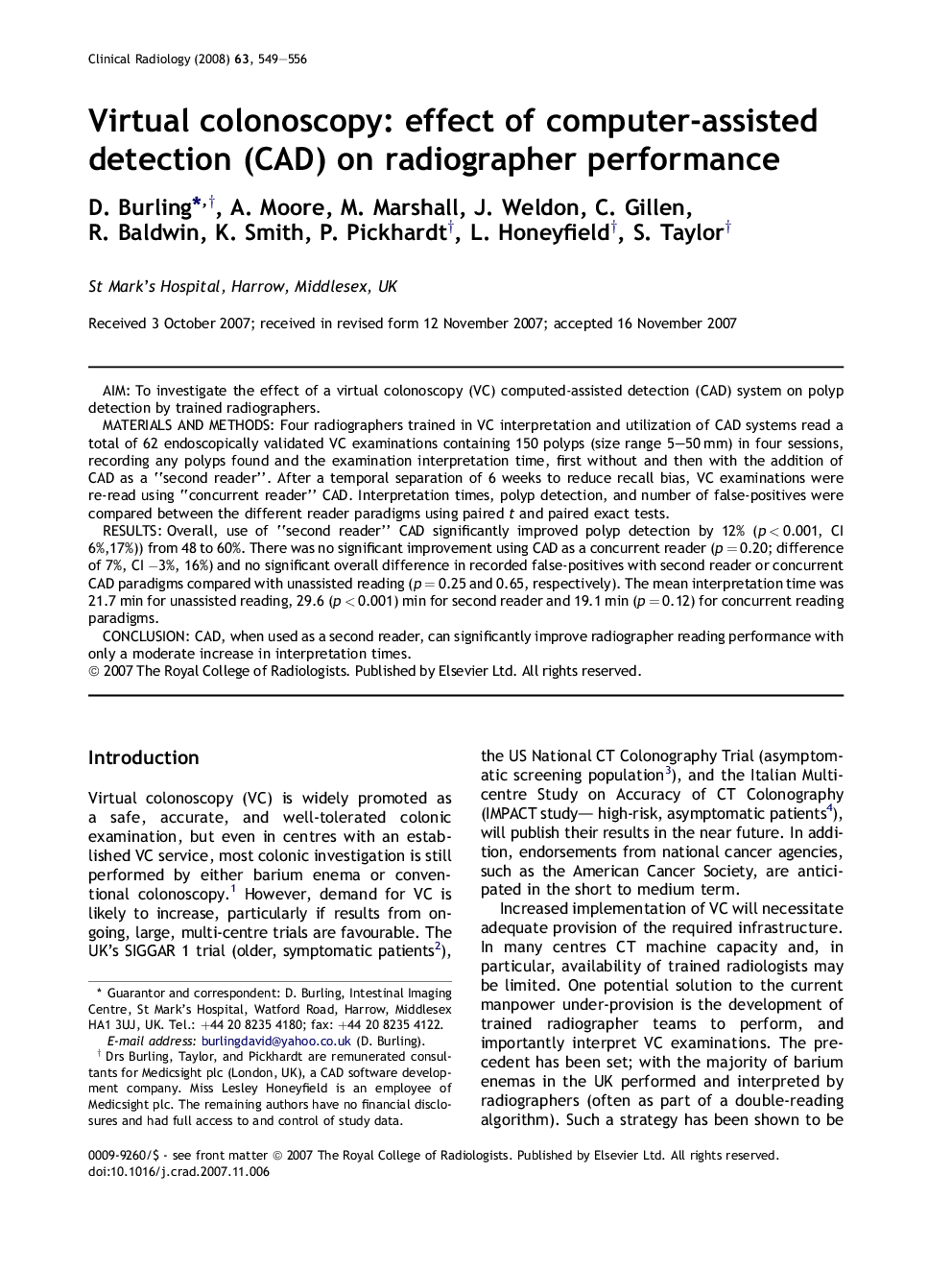| Article ID | Journal | Published Year | Pages | File Type |
|---|---|---|---|---|
| 3983244 | Clinical Radiology | 2008 | 8 Pages |
AimTo investigate the effect of a virtual colonoscopy (VC) computed-assisted detection (CAD) system on polyp detection by trained radiographers.Materials and methodsFour radiographers trained in VC interpretation and utilization of CAD systems read a total of 62 endoscopically validated VC examinations containing 150 polyps (size range 5–50 mm) in four sessions, recording any polyps found and the examination interpretation time, first without and then with the addition of CAD as a “second reader”. After a temporal separation of 6 weeks to reduce recall bias, VC examinations were re-read using “concurrent reader” CAD. Interpretation times, polyp detection, and number of false-positives were compared between the different reader paradigms using paired t and paired exact tests.ResultsOverall, use of “second reader” CAD significantly improved polyp detection by 12% (p < 0.001, CI 6%,17%)) from 48 to 60%. There was no significant improvement using CAD as a concurrent reader (p = 0.20; difference of 7%, CI −3%, 16%) and no significant overall difference in recorded false-positives with second reader or concurrent CAD paradigms compared with unassisted reading (p = 0.25 and 0.65, respectively). The mean interpretation time was 21.7 min for unassisted reading, 29.6 (p < 0.001) min for second reader and 19.1 min (p = 0.12) for concurrent reading paradigms.ConclusionCAD, when used as a second reader, can significantly improve radiographer reading performance with only a moderate increase in interpretation times.
